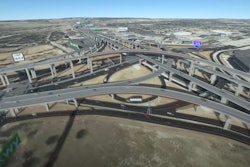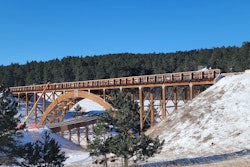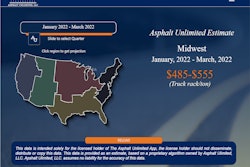
Despite more awareness and safety precautions, contractors report that roadside work zones are getting more dangerous.
In a survey released May 25 by Associated General Contractors of America, 64% of contractors reported that drivers had crashed into their work zones in the past year. That is a 4 percentage point increase from last year’s survey.
The main culprit, contractors say, is distracted drivers. Speed, of course, has always been a top problem as well as traffic and drunken drivers, but contractors noted that drivers are spending more time on their phones and not watching where they’re going. That led 81% of contractors to cite phones as the leading reason highway work is more dangerous than a year ago. That distraction has led drivers to swerve into work zones more so than in the past.
“Despite cars getting safer, we're having more and more crashes in work zones,” said Skip Powe, principal of Smith Seckman Reid consulting and engineering firm.
“The problem now is you're distracted,” added Powe, former state construction engineer for the Alabama Department of Transportation. “So in the past, you were just driving fast. Now you're driving fast, and you're not paying attention.”
He also noted that this change in driving behavior has increased the costs of highway projects because barriers need to be installed, as the orange- and white-striped vertical panels no longer serve as a deterrent. On a highway project near Birmingham, Alabama, he said, there were so many work zone crashes in the first three months that the contractor had to make a change order to install 4 miles of barrier.
“So you're talking about a multimillion-dollar change order because of driver behavior,” Powe said.
The other top reasons cited for more dangerous work zones were speeding (71%) and traffic (62%).
In rolling out the new data, AGC highlighted 25-year-old Marshall James Walton who was killed on an Alabama road project in 2015. He was working on a trailer when the driver of a pickup truck crashed into him. The driver did not face any criminal charges. His parents worked with lawmakers and construction industry interests to pass the Marshall James Walton Highway Safety Act, which created the crime of vehicular homicide in the state.
To watch an AGC video of Marshall Walton’s case, see below:
Some in the construction industry also want to see speed camera enforcement in work zones. They say that having a single police car at work zones is not a deterrent to frequent commuters. Adding another officer to chase down speeders would help, but states and local governments usually don’t have the financial resources.
Steve McGough, president and CEO of HCSS, which conducted the survey with AGC, called for automated traffic enforcement, in which speed cameras could clock speeders and send them tickets.
“Where it’s been used, it’s been effective,” McGough said. “While on major interstates, where you have the traveling public that may not be going through the work zone day after day, it might not be as effective.
“But I can assure you, where people are driving through the same work zones on a daily basis, it makes a difference.”
Contractors cited more police at work zones as their top request, at 81%.
Marty McKee, vice president at King Asphalt in Liberty, South Carolina, said most of the police presence in his company’s work zones has been local officers in a squad car with blue lights flashing, and that’s all. But if a second officer was there to chase down drivers, it could make a difference.
He recalled a recent night when one of the company’s work zones had a second officer stopping speeders.
“He started pulling some people over, and our people were literally cheering,” McKee said. “… He got everybody's attention.”
Methods to increase safety cited by contractors in the survey were:
- Stricter enforcement of existing traffic laws – 67%
- Stricter laws against cellphone usage while driving – 61%
- Closing roads and detouring traffic – 61%
- Speed cameras and automated ticketing – 55%
- Tougher laws and fines for traffic violations in work zones – 47%
- Better, more frequent training for workers – 23%
Despite all the efforts, though, the biggest need for improving worker safety is for drivers to be more careful. Ken Simonson, AGC chief economist, noted more passengers and drivers are injured or die in work zone crashes than workers.
“The ultimate responsibility lies with motorists,” Simonson said. “The best thing anyone can do to protect themselves and workers is to slow down, put the phone away and pay attention when they are in a highway work zone.”
Survey highlights
The 2022 Work Zone Awareness Survey revealed the following highlights from its 538 respondents:
- Percentage of contractors who had five or more work zone crashes in the past year: 32%
- Percentage whose workers were injured: 18%
- Percentage in which drivers or passengers were injured: 41%
- Percentage whose workers died: 5%
- Percentage in which drivers or passengers died: 15%
- Percentage of contractors who see greater risk now versus a year ago: 58%
- Percentage who have seen an increase in work-zone crashes due to night work: 61%












